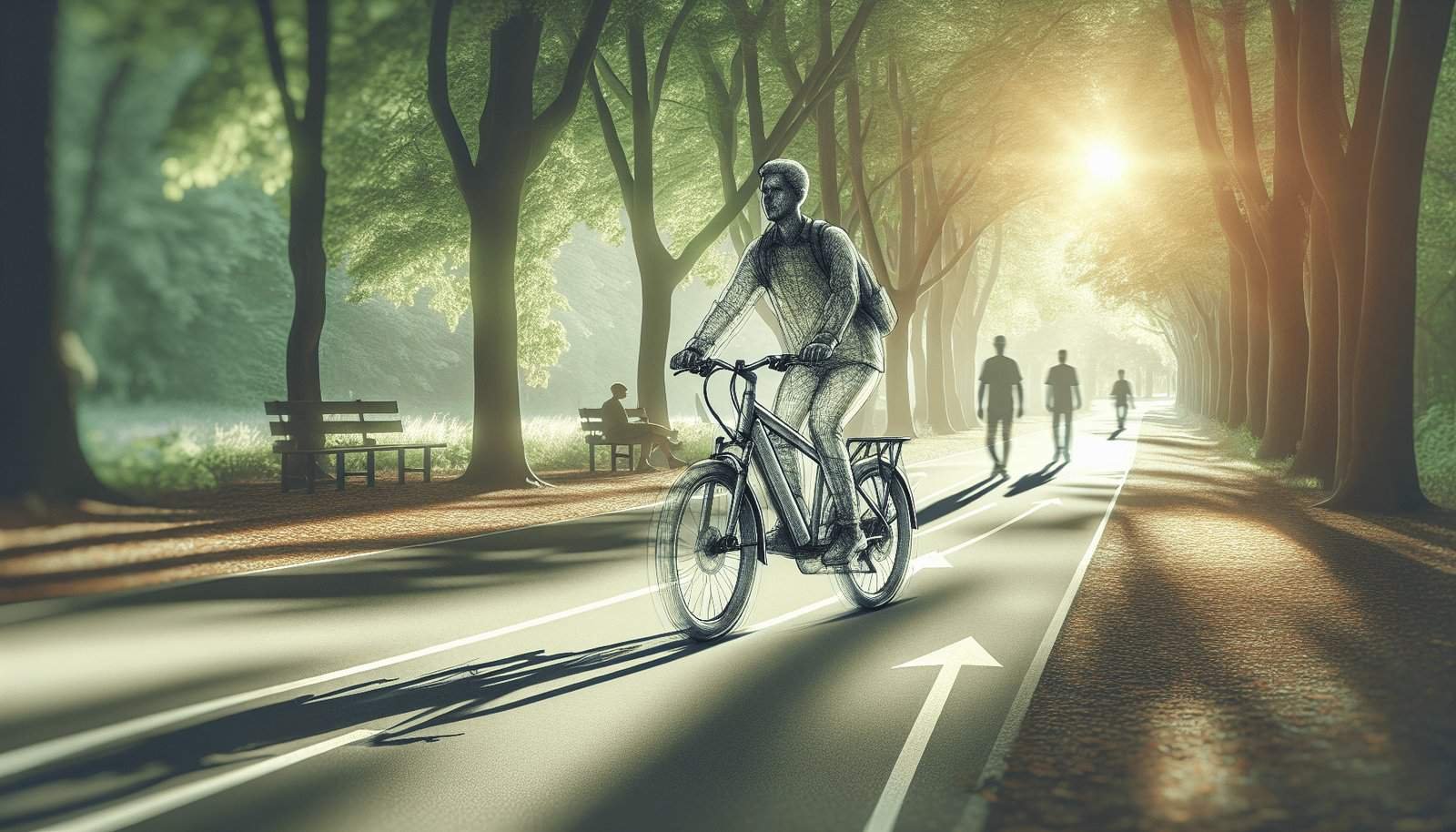Have you ever found yourself wondering about the specific rules for using electric bikes on shared pathways? It’s a common question and an important one, especially as electric bikes (e-bikes) become more popular. Using shared pathways safely and responsibly is crucial for everyone’s enjoyment.
What Are Shared Pathways?
Shared pathways are designated spaces intended for use by multiple types of users, including pedestrians, cyclists, skaters, and sometimes even horse riders. These pathways are usually marked and allow for recreational and commuting purposes alike. Their shared nature demands extra caution and adherence to specific rules to ensure safety and enjoyment for all.
Purpose of Shared Pathways
Shared pathways provide an environment where people can engage in physical activity, commute, or simply enjoy the outdoors. These paths often run through parks, along rivers, or connect different parts of a city, encouraging non-motorized transportation and offering a peaceful route away from busy streets.
Why the Rules Matter
Rules for using e-bikes on shared pathways are important to ensure safety, harmony, and the protection of the environment. Adopting a respectful attitude towards other path users and following established guidelines allows for smoother and more enjoyable journeys for everyone involved.
Safety Concerns
With the increasing speed and power of e-bikes, safety becomes a significant concern on shared pathways. E-bikes can travel faster than traditional bicycles, which might surprise pedestrians or other cyclists and lead to accidents. Understanding and following the rules can help mitigate these risks.
Environmental Impact
Proper usage of e-bikes on shared pathways also has an environmental aspect. For instance, staying on designated paths helps to protect the surrounding flora and fauna from being disturbed or damaged, maintaining the natural beauty and biodiversity of these spaces.

General Rules for Using E-Bikes on Shared Pathways
While specific regulations can vary from place to place, there are general rules and guidelines commonly followed worldwide. These include speed limits, right of way, and usage hours.
Speed Limits
Many shared pathways have speed limits to ensure the safety of all users. For e-bikes, this typically ranges between 10-20 km/h (6-12 mph). Adhering to these limits helps prevent collisions and makes the pathways safer for everyone.
Right of Way
Pedestrians usually have the right of way on shared pathways. As an e-bike user, you should always yield to walkers, joggers, and slower cyclists. This practice keeps the pathways orderly and reduces potential conflicts.
| User Type | Right of Way Priority |
|---|---|
| Pedestrians | Highest |
| Joggers | High |
| Cyclists | Moderate |
| E-Bike Users | Low |
Usage Hours
Some shared pathways might have specific usage hours for different types of users, including e-bikes. Checking local regulations and adhering to these time slots can help avoid congestion and potential accidents.
Legislations Specific to E-Bikes
In addition to general rules, there are specific legislations governing the use of e-bikes on shared pathways. These laws vary based on the area and type of e-bike you are using.
E-Bike Classification
E-bikes are usually classified into different categories which determine how they can be used on shared pathways. The classifications often depend on the bike’s speed and whether it has a throttle or pedal-assist.
- Class 1: Pedal-assist e-bikes that provide assistance only when you pedal and usually limited to 20 mph.
- Class 2: Throttle-assist e-bikes that do not require pedaling, also limited to 20 mph.
- Class 3: Pedal-assist e-bikes that assist up to 28 mph, often restricted from many shared pathways.
E-Bike Classification Table
| E-Bike Class | Type of Assist | Speed Limit |
|---|---|---|
| Class 1 | Pedal-Assist | 20 mph |
| Class 2 | Throttle-Assist | 20 mph |
| Class 3 | Pedal-Assist | 28 mph |
Local Regulations
Local authorities might have specific rules complementing national or state laws regarding e-bike usage on shared pathways. Always check the local regulations of the place where you plan to ride.

Best Practices for E-Bike Users
Understanding and following the rules is just part of being a responsible e-bike user. Adopting best practices will enhance your riding experience and keep others safe.
Communication
It’s vital to communicate your presence to others on the shared pathway. Use a bell or call out politely when overtaking pedestrians or slower cyclists. Clear communication helps prevent unexpected movements that could lead to collisions.
Riding at a Safe Speed
Even within speed limits, adjust your speed according to the surroundings. If the path is crowded or you’re approaching tight corners, slowing down enhances safety for you and others.
Awareness of Surroundings
Stay vigilant and aware of other path users, potential hazards, and even weather conditions that might influence your ride. Awareness can help you react promptly to avoid accidents.
Use of Protective Gear
Wearing protective gear such as helmets and reflective clothing is advisable. Although it might not be mandatory on all pathways, it can significantly reduce injury risks.
Educating New E-Bike Owners
If you’re new to e-bikes or know someone who is, familiarizing with the rules and best practices can be crucial. Comprehensive education helps in creating a safer environment for everyone on shared pathways.
Beginner’s Guide
Starting with a beginner’s guide to e-bikes and pathway etiquette can make transitioning to e-bike usage smoother. A guide typically covers the basics of operating an e-bike, understanding its components, and applicable rules.
Community Workshops
Participating in community workshops or safety programs can be an excellent way to learn and share knowledge about e-bike usage on shared pathways. These opportunities provide hands-on experience and direct interaction with experienced cyclists and local authorities.

Challenges and Misconceptions
Despite the benefits and growing acceptance, e-bike users often face challenges and misconceptions. Addressing these issues is important for fostering a better understanding among all shared pathway users.
Speeding Concerns
One major concern is the perception that all e-bikes are too fast for shared pathways. Clarifying that many e-bikes comply with prescribed speed limits and are designed for safe usage is crucial.
Environmental Impact Misunderstanding
Some people worry that e-bikes might damage pathways or disturb the environment. While any vehicle can cause wear and tear, e-bikes, when used responsibly, do not have more impact than traditional bikes.
Legal Confusion
With varying regulations, there can be confusion about what is legal and what isn’t. E-bike users might face criticism based on outdated or incorrect information. Staying informed and educating others can help combat this confusion.
Solutions for Harmonious Shared Pathway Usage
Creating harmony on shared pathways requires collective effort from e-bike users, traditional cyclists, pedestrians, and authorities. Here’s how we can work together.
Clear Signage and Information
Providing clear and ample signage about e-bike rules and classifications on shared pathways can help inform all users. Signage can include speed limits, right-of-way rules, and specific pathway segments where e-bikes are allowed or restricted.
Regular Maintenance and Inspection
Maintaining pathways in good condition helps ensure a safe and enjoyable experience for everyone. Regular inspections can identify areas that need repairs, making the paths safer for all users, including e-bikes.
Inclusive Policy-Making
Involving e-bike users in the policymaking process can ensure that the regulations are fair and practical. It encourages a sense of ownership and responsibility among the users, fostering better adherence to the rules.

Looking to the Future
As technology advances and e-bikes continue to grow in popularity, the future of shared pathways will likely see further innovations and adaptations.
Advancements in E-Bike Technology
Future e-bike models might come equipped with features such as automatic speed limiters or enhanced safety systems to make riding on shared pathways even safer and more intuitive.
Smart Pathway Systems
Integrating smart technology into shared pathways could offer real-time data on usage, congestion, and safety alerts. This could greatly assist in managing the flow of different users and enhancing overall safety.
Final Thoughts
Ensuring the safe and enjoyable use of shared pathways for everyone requires understanding and respect for specific rules and guidelines for e-bikes. By adhering to these rules, communicating effectively, and being conscious of the environment and fellow pathway users, you contribute to a harmonious shared pathway experience. Whether you are a seasoned e-bike user or a beginner, embracing these principles helps to promote an enjoyable and safe shared-space for all.
Are there any specific pathways or local rules you have encountered that have helped you in your e-bike journeys? Feel free to share your experiences and insights!


